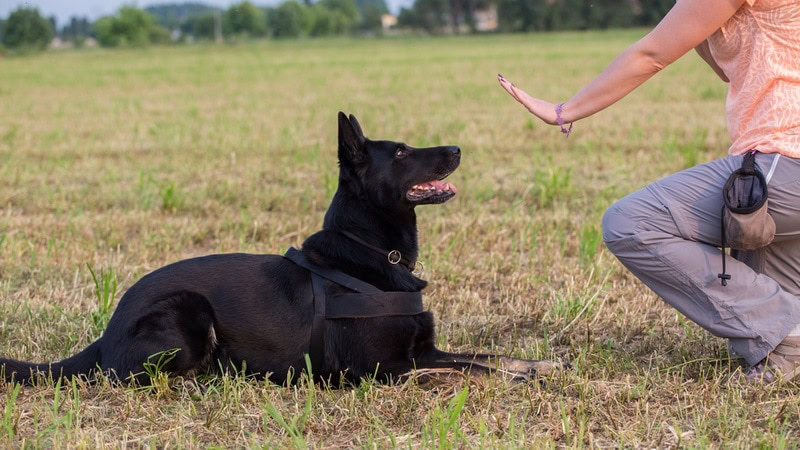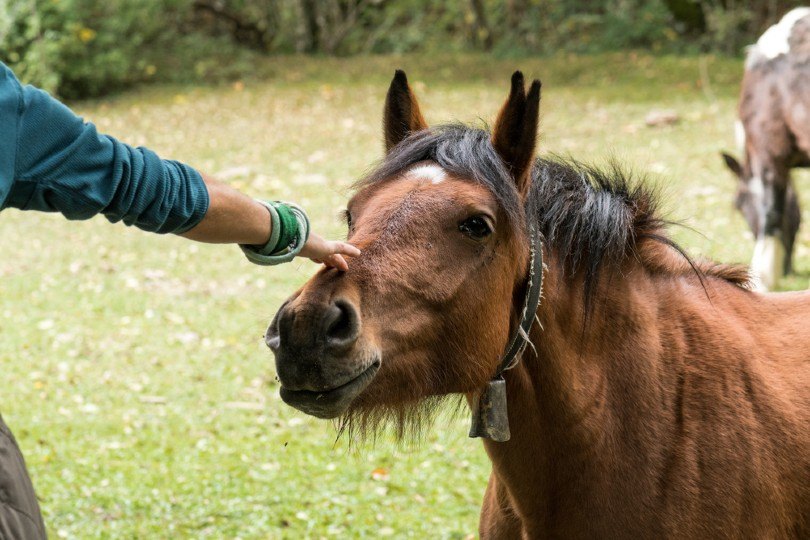VET APPROVED

The information is current and up-to-date in accordance with the latest veterinarian research.
Learn more »If you have ever owned a dog that exhibited undesirable behaviors, you know how important it is for them to learn and respond to a particular command. Not only is it frustrating when a dog is engaging in less-than-desirable or fully unwanted behavior and will not listen, but it is also dangerous for your pet to not respond to a “no” or “leave” command in a life-threatening or potentially harmful situation.
So, to keep your sanity and keep your dog safe, here is a step-by-step guide to teach your dog the “no” or “leave” command.
The 9 Tips on How to Teach a Dog No
There are many training methods on how to teach dogs the “no” or “leave” command, and the veterinarian has fact-checked this particular one, but it does not express their personal or professional choice. All canine training methods should always focus on positive reinforcement, and never on punishment.
1. Use a Pedestal
To teach your dog the “no” command will require using some type of pedestal. To prevent the dog from being able to reach you or the treats, anchor the leash behind the dog. You want to be in proximity to the dog, but they should not be able to reach you.
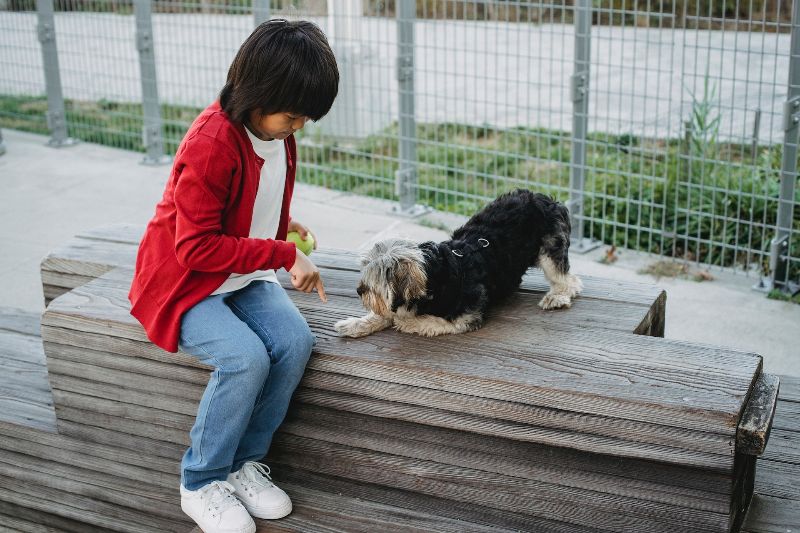
2. Use the “No” Command
Using the treats, tell the dog “No” or “Leave” if they reach for the treat. Repeat the “no” command each time the dog tries to go for the treat. Use a calm voice and never shout.
Alternatively, hide the treat in the closed palm of your hand. The dog will sniff at it, but do not let them have the treat. At this point you don’t need to use the command until the dog understands what is expected from them.
3. Wait and Release
Eventually, the dog should stop reaching for the treat. Once they do, wait about five to seven seconds, and give it a treat. To release the treat, say “Okay!” as you give the dog the treat. Do not give the dog the treat from the pedestal; it should come from your hand.
If the treat was hidden in your closed palm, after your dog relaxes and stops looking for the treat, giving you some distance and waiting patiently, give them the treat and praise them. You can say “Okay” or “Go”. After a few repeats, start to use the command “no” or “leave” in the above step.
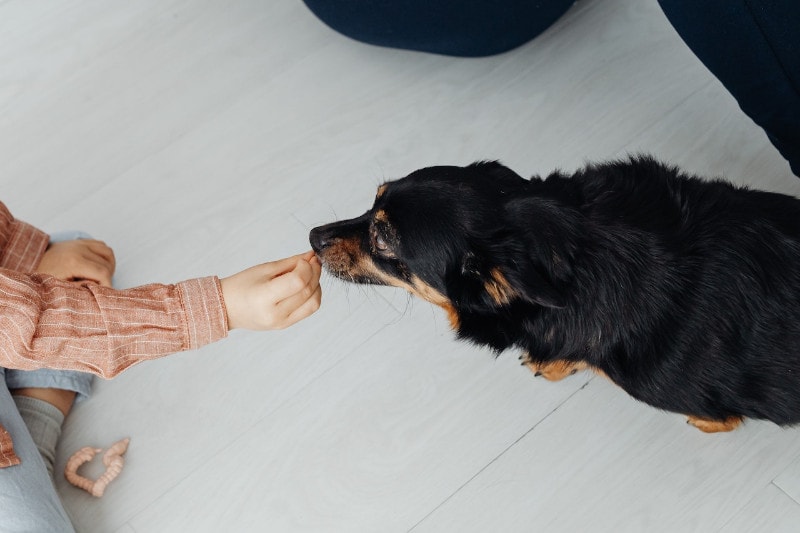
4. More Treats and Positive Reinforcement
Once your dog knows what is expected of them, up the ante. Take about four or five treats and place them in front of the dog one at a time. When doing so, calmly say “no” as you are setting them on the pedestal. If the dog remains calm for the allotted time, pick up the treats that you placed on the pedestal and feed them to the dog from your hand.
5. Move the Treats Closer to the Dog
As the dog gets better, start placing the treats where they can reach them. Make sure that it is not too easy for the dog to grab the treat. Do not rush these steps, in order to reduce the chance of your dog making a mistake.
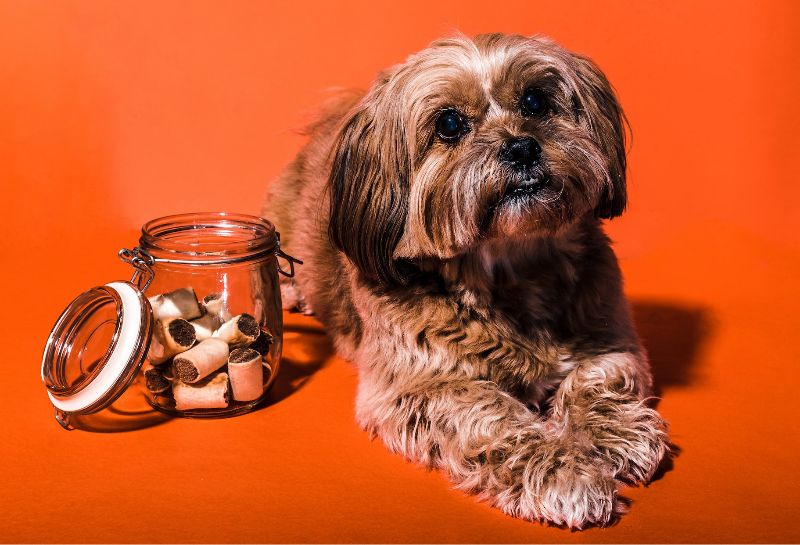
6. Use a Verbal Cue
If your dog attempts to take the treats, try using a gentle but determined voice command to stop it. After a while, you should not depend on the anchor leash. To distract the dog from the treat, tap your fingers on the pedestal as you say the command. If you find there is a high chance your dog will take the treats despite the command, take a step back and slow down the training process, by increasing the distance between them and the treats.
7. Up the Ante
If your dog has been progressing satisfactorily, now you can move the treats closer to the dog. This will give the dog some “motivation” to respond to your commands as they now see their reward.
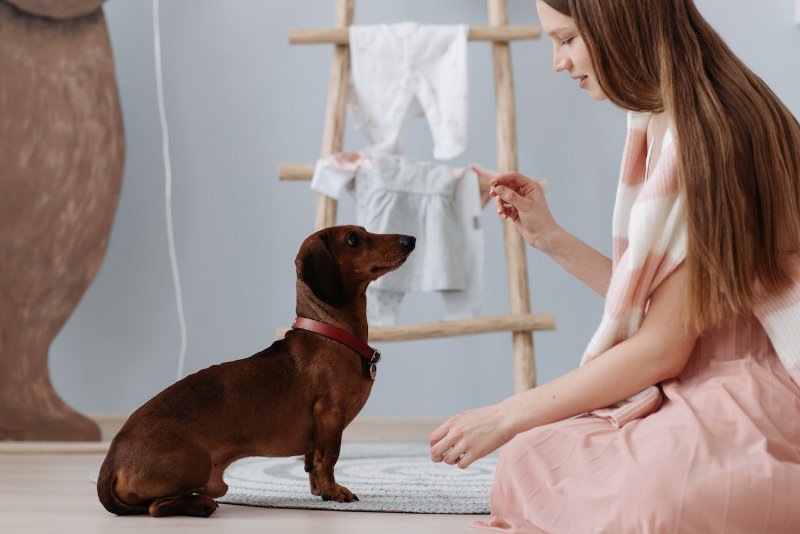
8. Test the Dog’s Restraint
If the dog has progressed and learned the pedestal technique, move the treats to the ground without restraint. Test the dog by putting treats all around it and use the “no” or “leave” command to stop them from taking the treats. If your dog does not listen, go back to the pedestal, and start from the beginning.
9. Don’t go too Fast
Dogs learn at their own pace. Give your canine the time they need to understand and learn what you expect from them. In case of any setbacks, slow down and go back a step.
If you are struggling with your dogs training or their behavior, we suggest getting advice from a vet.
Conclusion
We hope this article has given you some ideas on how to train your dog to the word “no” or “leave”. No matter how long it takes to teach your dog the “No” command, it is important to take your time and be patient. Allow the time you are spending with your dog to create a positive and healthy bond for you and your pet.
Featured Image Credit: Luca Nichetti, Shutterstock
